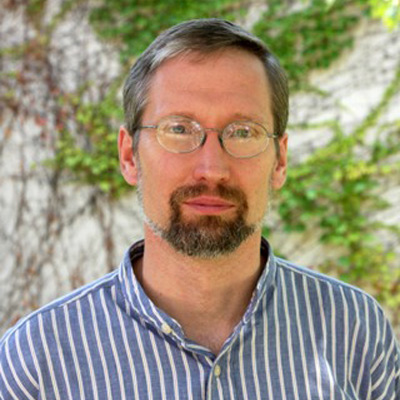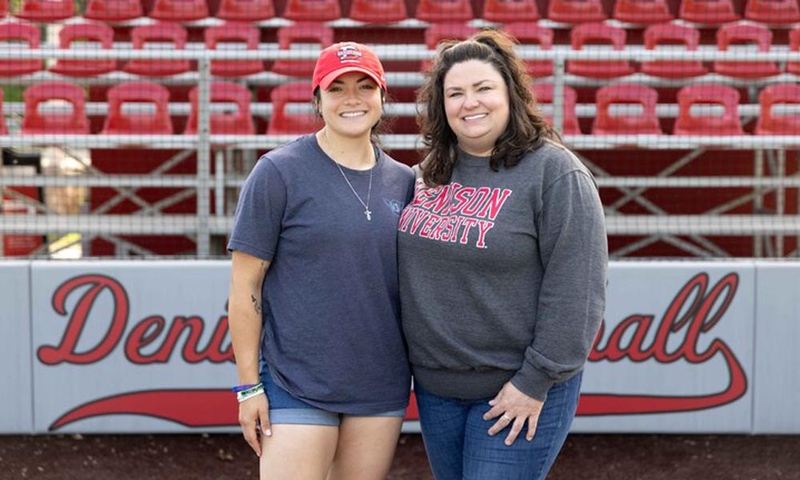
Peter Kuhlman
Research
Broadly, my research interests lie in the area of Molecular Evolution. Specifically, I'm interested in the rates at which biological macromolecules evolve and the forces that constrain the rate of evolution of individual molecules — both at the level of the molecule and the organism.
Currently, my research group is focused on understanding the molecular mechanism underlying one particular biological phenomenon, with the eventual aim of characterizing the forces that constrain its development and maintenance. Our organism of interest is the social amoeba Dictyostelium discoideum, known to its friends as “dicty”. Dicty amoebae spend most of their lives as solitary individuals, eating bacteria in the soil. When their population density rises and food becomes scarce, however, the dicty gather together in great cell masses — tens of thousands or even hundreds of thousands of cells — and differentiate into a multi-cellular organism. The resulting “slug” has a head and tail and rudimentary “organ” systems, and climbs towards the light and heat of the soil surface. Once there, some of the cells commit suicide to form a sort of a ladder from their cell skeletons; the remaining cells climb up that ladder, further differentiate into spores, and get dispersed into new habitats that may offer better conditions for life. If that wasn’t remarkable enough, recent studies have shown that a subset of wild dicty cells will actually initiate the social stage of their lifecycle Before they run out of food bacteria, and package up some of the surrounding bacteria to disperse with the spores into their new habitats. This has been described as the most primitive form of farming in the biological world.
Our group is investigating the biochemical basis of this “farming” behavior — how it works mechanistically, and what triggers it. If you find this intriguing and want to learn more, I encourage you to email me or stop by to chat!
Works
- P. Kuhlman, H.L. Duff*, and A. Galant*. 2004. A fluorescence-based assay for multi-subunit DNA-dependent RNA polymerases. Analytical Biochemistry. v. 324 p. 183-190
- C. K. Brown, P. L. Kuhlman, S. Mattingly, K. Slates, P. J. Calie, and W. W. Farrar. 1998. A model of the quaternary structure of enolases, based on structural and evolutionary analysis of the octameric enolase from Bacillus subtilis. J. Prot. Chem.. v. 17 p. 855-866
- Y. Cho, Y.-L. Qiu, P. Kuhlman, and J. D. Palmer . 1998. Explosive invasion of plant mitochondria by a group I intron.. Proc. Natl. Acad. Sci USA. v. 95 p. 14244-14249
- J.C. Vaughn, M. T. Mason, G. L. Sper-Whitis, P. Kuhlman, and J. D. Palmer. 1995. Fungal origin by horizontal transfer of a plant mitochondrial group I intron in the chimeric coxI gene of Peperomia. J. Mol. Evol.. v. 41 p. 563-572
- P. Kuhlman and J. D. Palmer. 1995. Isolation, expression, and evolution of the gene encoding mitochondrial elongation factor Tu in Arabidopsis thaliana. Plant Mol. Biol.. v. 29 p. 1057-1070
- P. Kuhlman, V. T. Moy, B. A. Lollo, and A. A. Brian. 1991. The accessory function of murine ICAM-1 in T lymphocyte activation: Contributions of adhesion and activation. J. Immunol. v. 146 p. 1773-1782
[* denotes an undergraduate student working under my guidance]
- S. Stefanović, P. Kuhlman, P. Calie, and J. Palmer. 2007. Rapid evolution of plastid RNA polymerases in three unrelated flowering plant lineages. Platform talk at the joint annual meetings of the Botanical Society of America and the American Society for Plant Biologists.
- P. Kuhlman and P. Calie. 2006. Accelerated sequence evolution of the four proteins comprising the core complex of the bacterial-derived DNA-dependent RNA polymerase in the plant family Geraniaceae. Poster presentation at the National IDeA Symposium of Biomedical Research Excellence.
- S. Hoskins, J. Hogan, D. Bautista, P. Kuhlman and P. Calie. 2004. Modeling studies suggest that the accelerated sequence evolution in the a-subunit of the Geraniaceae DNA-dependant RNA polymerase is accompanied by a high level of conservation of secondary structure. Poster presentation at the annual meeting of the American Society of Plant Biologists.
- P. Kuhlman and H.L. Duff*. 2003. A fluorescence-based assay for RNA Polymerase activity. Poster presentation at Experimental Biology 2003, the combined annual meeting of several national societies for experimental biologists, including the American Society for Biochemistry and Molecular Biology.
- C. N. Gorman*, H. L. Duff*, and P. Kuhlman . 2000. Investigations into the function of the rapidly evolving RNA Polymerase in Pelargonium chloroplasts. Poster presentation at the annual meeting of the (international) Protein Society.
- H. Duff*, T. Wine*, and P. Kuhlman . 1999. Investigation of the rapidly evolving plastid RNA polymerase in Pelargonium. Poster presentation at the International Botanical Congress.
- P. Kuhlman, P. J. Calie, J. M. Logsdon, A. Z. Wang*, G. Vora*, B. Thomason*, and J. D. Palmer . 1998. Accelerated evolution of the chloroplast-encoded RNA polymerase driven by positive Darwinian selection. Talk given at the 1998 international meeting of the Society for Molecular Biology and Evolution.
